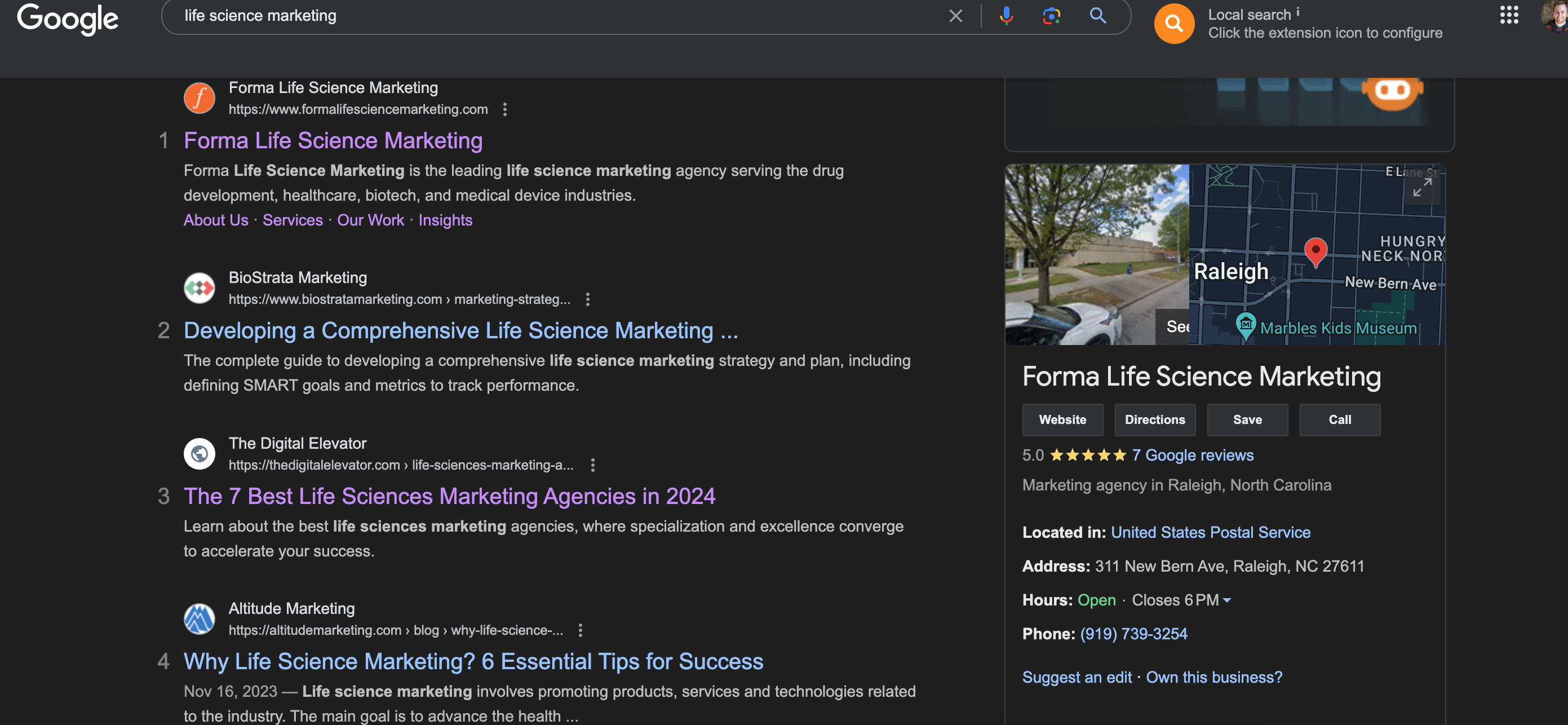How to Protect Your Life Science Website from Google’s Updates
By Jordan Eller

Understanding Google Algorithm Updates: How Life Science Companies Can Protect Their Websites
Has your website traffic taken a seemingly-random nosedive lately? Or are you enjoying an unexpected surge in keyword rankings on search engines? Either way, don’t panic!
Google algorithm updates can significantly impact the visibility of websites, including those in the life sciences industry. These updates, which occur regularly, refine how Google ranks websites on search engine results pages (SERPs). For life science companies, staying ahead of these updates and maintaining a strong online presence is crucial to reaching target audiences, such as researchers, healthcare executives, and patients.
What Are Google Algorithm Updates?
Put simply, Google’s algorithm determines the order in which websites appear in search results. Regular updates are designed to improve search relevance, reduce spam, and ensure high-quality content rises to the top. While some updates are minor, others can cause substantial fluctuations in rankings. Major updates like Panda, Penguin, and Core Web Vitals assessments have focused on content quality, website speed, and user experience.

An example of a Google search engine results page (SERP). These websites (including Forma’s) are ranked by Google’s Algorithm, which receives numerous updates each year.
The Impact on Life Science Companies
Life science companies depend heavily on online visibility to reach niche markets and share critical information. Algorithm changes can affect a company’s search rankings, reducing the website’s visibility and organic traffic. These fluctuations can have direct consequences on lead generation, brand authority, and even sales of products like lab equipment or pharmaceuticals.
Life sciences websites often house technical content, research papers, and complex data, which, if not optimized for search, can become buried in search results after an algorithm update. Additionally, highly regulated industries like life sciences must be particularly cautious about content accuracy and trustworthiness, as Google rewards trustworthy, well-sourced content in the rankings.
For a deeper dive into the specifics of how Google measures the strength of websites, check out our blog: Core Web Vitals: 3 Vital Ways to Supercharge Your Science Website
How Life Science Companies Can Protect Their Websites
1. Focus on Quality Content
Google values authoritative, relevant, and user-friendly content. Life science companies should consistently publish high-quality content that reflects their expertise. Blog posts, research papers, and case studies must be well-written, factually accurate, and include citations from trusted sources. Avoid keyword stuffing or overly promotional content, as this can lead to penalties.
2. Improve Technical SEO
Technical SEO, such as site speed, mobile-friendliness, and a secure HTTPS connection, plays a crucial role in rankings. Life science websites can often be dense with data, images, and technical documents, which can slow down loading times. Optimizing for faster load speeds, simplifying navigation, and ensuring the website is mobile-friendly can help prevent ranking drops after algorithm updates.
Did you know: Google has a free tool for testing the pagespeed and responsiveness of both the desktop and mobile versions of your website. Check it out!
3. Backlink Strategy
Backlinks from reputable sources are a strong indicator of a website’s authority. For life science companies, earning links from academic institutions, respected industry journals (such as our friends at NCbiotech, who at the time of this writing are celebrating their 40th year in business), and professional associations can boost rankings. However, beware of low-quality or spammy backlinks, which Google’s updates like Penguin target. Regularly auditing backlinks and disavowing any suspicious links can help protect your life science website.
4. Regular Website Audits
Frequent audits of your website’s SEO performance and content quality can help catch issues before an algorithm update penalizes you. Monitoring technical aspects like broken links, duplicate content, and crawl errors, while also analyzing user behavior and content engagement, ensures your site is in the best shape to weather updates.
How to Recover from a Rankings Fluctuation
If a life science company notices a dip in rankings following an algorithm update, the first step is to diagnose the issue. Conduct a thorough audit of your website, paying attention to content quality, user experience, and technical SEO factors. It may be necessary to rewrite outdated or thin content, address any broken links, or improve your website’s performance metrics, such as slow pagespeed.
Working with SEO professionals who understand Google’s evolving algorithms can help you regain lost ground. SEO experts can analyze the latest update’s specific impact on your site and suggest targeted improvements to recover and strengthen your rankings.
Google’s Algorithm is always changing. Are you ready for the next update?
Google algorithm updates are an inevitable part of the digital landscape. However, by focusing on high-quality content, maintaining strong technical SEO, and proactively monitoring your site’s performance, life science companies can protect their websites from ranking fluctuations. By staying prepared, you can ensure your site remains visible to your target audience, driving both engagement and business growth.
Ready to boost your life science company’s online presence? Contact us today for a customized digital strategy that will help you stay ahead of Google algorithm updates and maintain your competitive edge in this highly-regulated industry.





